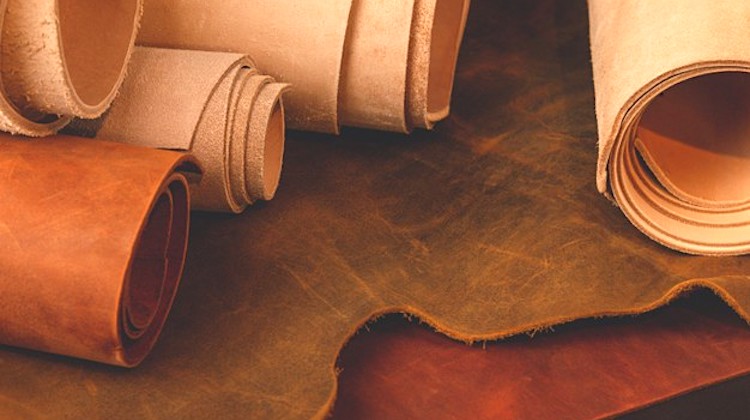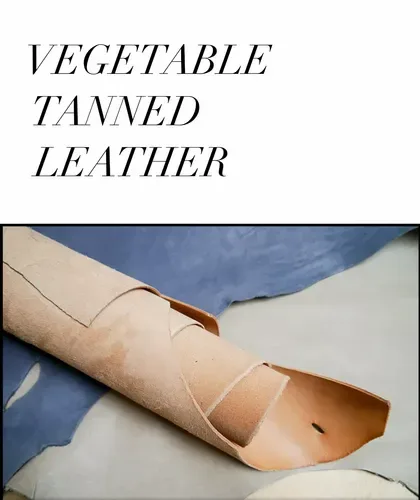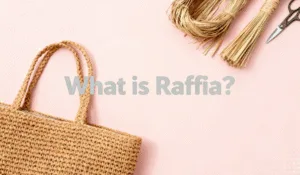Vegetable tanning is a traditional and eco-friendly leather processing method that has become increasingly popular in the world of leather bags. Known for its natural, safe qualities and unique texture, vegetable tanned leather offers a distinct charm that sets it apart from other materials. Unlike chrome tanning, this method relies on natural plant extracts, reducing environmental impact while infusing the leather with a rich aroma and warm, earthy tones. These characteristics not only enhance the aesthetic appeal of leather bags but also reflect a commitment to sustainability. In this article, we will take a closer look at what vegetable tanning is and explore the production process behind high-quality vegetable tanned leather bags—helping you appreciate the craftsmanship and eco-conscious values behind every piece.
Contents
What Is Vegetable Tanned Leather Bag?

Vegetable tanned leather bags are crafted from leather that has been tanned using natural tannins derived from plant sources such as tree bark, leaves, and fruits. This time-honored tanning method, used for centuries, relies entirely on these natural ingredients to turn raw hides into durable and flexible leather. The result is a leather bag that not only showcases rich, earthy tones and a natural texture but also reflects a commitment to traditional craftsmanship and sustainability.
Common Sources of Tannins in Vegetable-Tanned Leather

Vegetable-tanned leather is processed using natural tannins extracted from plants. These organic sources not only give the leather its distinctive texture and rich, earthy tones but also reflect a commitment to eco-friendly and sustainable practices. The most commonly used plant-based tannins include:

Oak Bark: Rich in tannic acid, oak bark is one of the most traditional tanning materials. It imparts excellent strength and flexibility to the leather.
Chestnut: Known for its high tannin content, chestnut bark produces a warm reddish-brown tone and is often used in premium leather goods.
Mimosa: Extracted from the bark of the mimosa tree, this is a widely used modern tanning agent. It provides a gentle color and consistent tanning results.
Quebracho: Sourced from South America, this tree contains a high level of tannins, contributing to a firmer structure and enhanced durability in leather.
Mangrove: In certain regions, extracts from mangrove trees are used for tanning. These offer unique regional characteristics and add diversity to vegetable-tanned leather production.
Thanks to their natural origins and environmentally friendly properties, these tannin sources are widely used in the production of high-quality leather products. Each plant-based tannin influences the final leather’s color, texture, and feel, offering a rich variety of aesthetic and functional qualities.
Differences Between Vegetable Tanning and Other Tanning Methods

Unlike chrome tanning, which uses chemical compounds like chromium salts for a faster tanning process, vegetable tanning is entirely natural and takes longer—sometimes several weeks. Chrome tanning offers greater water resistance and softness but involves toxic chemicals that can harm the environment. Vegetable tanning, on the other hand, is eco-friendly and avoids hazardous substances, making it a sustainable choice.
Advantages of Vegetable Tanned Leather Bag

Crafted to blend timeless aesthetics with eco-conscious values, vegetable tanned leather bags are a superior choice for those seeking both style and sustainability. Made using natural tannins extracted from plants like oak, chestnut, and mimosa, this traditional tanning method produces bags with remarkable durability, rich character, and a significantly lower environmental impact. Unlike chemically treated options, vegetable tanned leather bags age beautifully, developing a unique patina that reflects your personal journey. Below are the key advantages that make vegetable tanned leather an ideal material for creating premium leather bags.
Environmentally Friendly and Sustainable
Vegetable tanned leather uses natural plant extracts instead of harmful chemicals, making the tanning process much safer for the environment. This sustainable method reduces pollution and supports eco-conscious production.
Natural Texture and Color Variations
Each piece of vegetable tanned leather has a unique look with rich, warm tones that can vary slightly, giving every product its own character. Over time, exposure to light and air naturally deepens the color, creating a beautiful, evolving finish.
Durability and Breathability
This leather is tough and long-lasting, ideal for products that need to withstand everyday use. Its natural tanning process keeps the material breathable, which enhances comfort and prevents moisture buildup.
Unique Patina Development Over Time
One of the most prized features of vegetable tanned leather is its ability to develop a distinct patina — a soft sheen and subtle texture changes that reflect its history and use, making each item truly one-of-a-kind.
Applications of Vegetable Tanned Leather

Vegetable tanned leather, with its natural beauty and durable qualities, has become a favored material in a variety of leather goods. Its unique characteristics make it especially suitable for high-end products and leatehr bag, handmade items, and traditional craft pieces where quality and authenticity are paramount.
High-End Leather Goods

Luxury brands often choose vegetable tanned leather for wallets, tote bags, and belts. The leather’s rich texture and ability to develop a beautiful patina over time add value and exclusivity to these products. Its durability ensures these items remain beautiful and functional for years.
Handcrafted Products

Artisans and small-scale leatherworkers prefer vegetable tanned leather for crafting bespoke goods such as journal covers, handbag, and wallets. The leather’s natural feel and the way it responds to hand tooling and dyeing make it perfect for personalized and detailed craftsmanship.
Traditional Craft and Heritage Items

Vegetable tanned leather is essential in products that celebrate traditional techniques, such as saddlery, heritage backpacks, and artisan shoes. Its firmness and ability to age gracefully ensure these pieces maintain their structural integrity and vintage charm.
Vegetable-tanned leather stands out for its natural aesthetics, durability, and excellent workability, making it a preferred material across various sectors. From luxury leather goods to handcrafted items and traditional artisan products, it embodies both functional quality and timeless appeal. Whether used by premium brands seeking unique finishes or by artisans valuing customization and craftsmanship, vegetable-tanned leather offers an ideal balance of beauty, resilience, and authenticity.
Why Designers and Consumers Prefer Vegetable Tanned Leather Bag
Designers and consumers alike appreciate custom vegetable tanned leather bags for their eco-friendly craftsmanship, natural elegance, and lasting quality. With time, these bags develop a unique patina that reflects the owner’s journey, turning every mark and shade into a story—making each piece personal and irreplaceable.
But how are these distinctive leather bags actually made? It all begins with selecting premium raw hides—typically cowhide or horsehide—chosen for their thickness, strength, and excellent ability to absorb natural tannins. These high-quality materials for custom bag are the foundation of a durable and refined bag.
The tanning process uses plant-derived tannins from sources such as oak bark, chestnut bark, and quebracho wood. After cleaning and soaking, the hides are slowly tanned over several weeks in natural tannin baths. This gradual process allows the leather to take on deep, warm tones and a strong yet supple structure—ideal qualities for crafting high-end bags. Once tanned, the leather is dried, conditioned, and then carefully cut and sewn by skilled artisans.
A small story from the workshop: a new apprentice once asked if adding more “magic bark” could speed up the process. The master laughed, saying, “This isn’t instant coffee—good leather takes time.” It’s this patience and dedication that makes each bag special.
At Sunteam, we combine traditional leatherworking skills with modern manufacturing excellence. We provide expert design support and strict quality control for every vegetable tanned leather bag. Whether you are a brand looking for custom designs or a business seeking a reliable partner, Sunteam is here to help you create leather bags with authentic character and long-lasting appeal.
Care Tips for Vegetable Tanned Leather

After investing time and craftsmanship in making vegetable tanned leather products, it’s important to take good care of them—especially since this leather tends to be more expensive. Proper care not only keeps your leather looking beautiful but also extends its life. But what about leftover leather that isn’t used right away? Let’s take a look at how professional leather workshops handle care and storage to avoid waste and damage.
1. Avoid Excess Moisture and Direct Sunlight
Vegetable tanned leather should be kept dry and away from prolonged exposure to direct sunlight, which can cause fading and stiffness.
2. Use Appropriate Conditioning Oils
Applying natural leather oils or conditioners helps maintain suppleness and prevent cracking. Be sure to use products specifically designed for vegetable tanned leather.
3. Regular Cleaning and Maintenance
Gently wipe the surface with a soft, dry cloth to remove dust. For deeper cleaning, use a damp cloth with mild soap, then let it air dry naturally. Regular maintenance will preserve the leather’s texture and appearance.
By following these simple steps, you can ensure that both finished products and leftover vegetable tanned leather remain in excellent condition for future use.
Summary
Have you ever wondered why vegetable tanned leather is praised as an eco-friendly and high-quality leather choice? With its natural and sustainable tanning process, combined with a unique and rich appearance, vegetable tanned leather has become the ideal material for premium leather products. From design to production and care, patience and expertise are key. At Sunteam, we are dedicated to providing you with top-quality vegetable tanned leather products and comprehensive technical support. Let’s work together to create a greener, more sustainable future. Feel free to contact us to learn more about vegetable tanned leather and how we can help bring your leather products to life with unique stories and lasting value.
Further Reading: What is PU Leather Bag? The Pros & Cons






